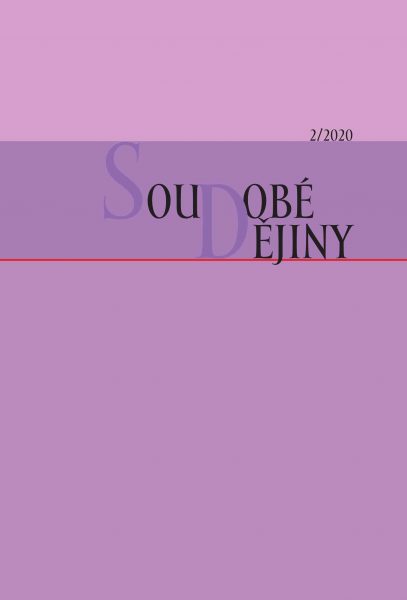Emanuel Famíra – muž, který netoužil po Jaru
Eamuel Famíra – the man who was not longing for the Spring
The portrait of an orthodox Communist
Author(s): Ondřej HolubSubject(s): History, Theatre, Dance, Performing Arts, Fine Arts / Performing Arts, Cultural history, History of ideas, Political history, Recent History (1900 till today), Interwar Period (1920 - 1939), Post-War period (1950 - 1989), History of Communism, History of Art
Published by: AV ČR - Akademie věd České republiky - Ústav pro soudobé dějiny
Keywords: Czechoslovakia;Emanuel Famíra;Prague Spring 1968;Communism; Stalinism; graphic art; theatre; socialist realism
Summary/Abstract: The case study deals with the Czechoslovak artist Emanuel Famíra (1900–1970), an autodidact who was active in multiple areas of art and who closely associated his lifeand work with the Communist movement. In the early 1920s, Famíra started performing as a solo dancer of the ballet troupe of the National Theatre in Prague and also became a relatively successful painter and sculptor. In the 1930s, he was also involvedin political theatre and these activities earned him several months of imprisonment. He established Proletscéna, an avant-garde theatre, of which he was a playwright, director and actor, and also the puppet Theatre of Pioneers, for which he was creating remarkable puppets. He joined the Communist Party of Czechoslovakia and was participating in its promotional events. After the liberation in 1945, he was the director of the ballet troupe of the National Theatre in Prague for a short time, and then hewas making his living as a graphic artist and pedagogue. His graphic work drew from impressionist-realistic traditions and subsequently identified itself with templates of socialist realism. In the 1950s, he was officially recognized, but he was finding himself increasingly on the periphery of artistic and social life in the 1960s. He could not identify himself with the advancing liberalization, he was openly opposing the reform movement during the Prague Spring, and joined an informal group of “old” orthodox Communist led by Josef Jodas (1905–1970) after the Soviet occupation. The presented study aims to examine the reasons and personal motives which caused Famíra to radically oppose ideas of the “socialism with a human face”. Methodologically inspired by works of German historian Jochen Hellbeck, the author attempts to look into Famíra’s intellectual, worldview and political development through the optics of his autobiography, diary entries, correspondence, and theoretical reflections of art work, and to set it into a historical context. Using the above as a basis, he attempts to define a certain type of revolutionary narrative shared by the group of Czechoslovak Communist “dogmatists” referred to above in the end of the 1960s. The author hypothesizes that the original source and also the keystone of the “Stalinist” political mentality was the intransigent strategy of the international Communist movement inthe first half of the 1930s, which was declared by the Communist International under the banner of fight against the so-called social fascism and of “class against class”. In his opinion, the profoundly adversarial perception of the world became a part of the identity of individuals such as Emanuel Famíra, surviving as an “undercurrent” in the Communist movement and activating itself in emergencies such as the Prague Spring.
Journal: Soudobé Dějiny
- Issue Year: XXVII/2020
- Issue No: 2
- Page Range: 279-324
- Page Count: 46
- Language: Czech

